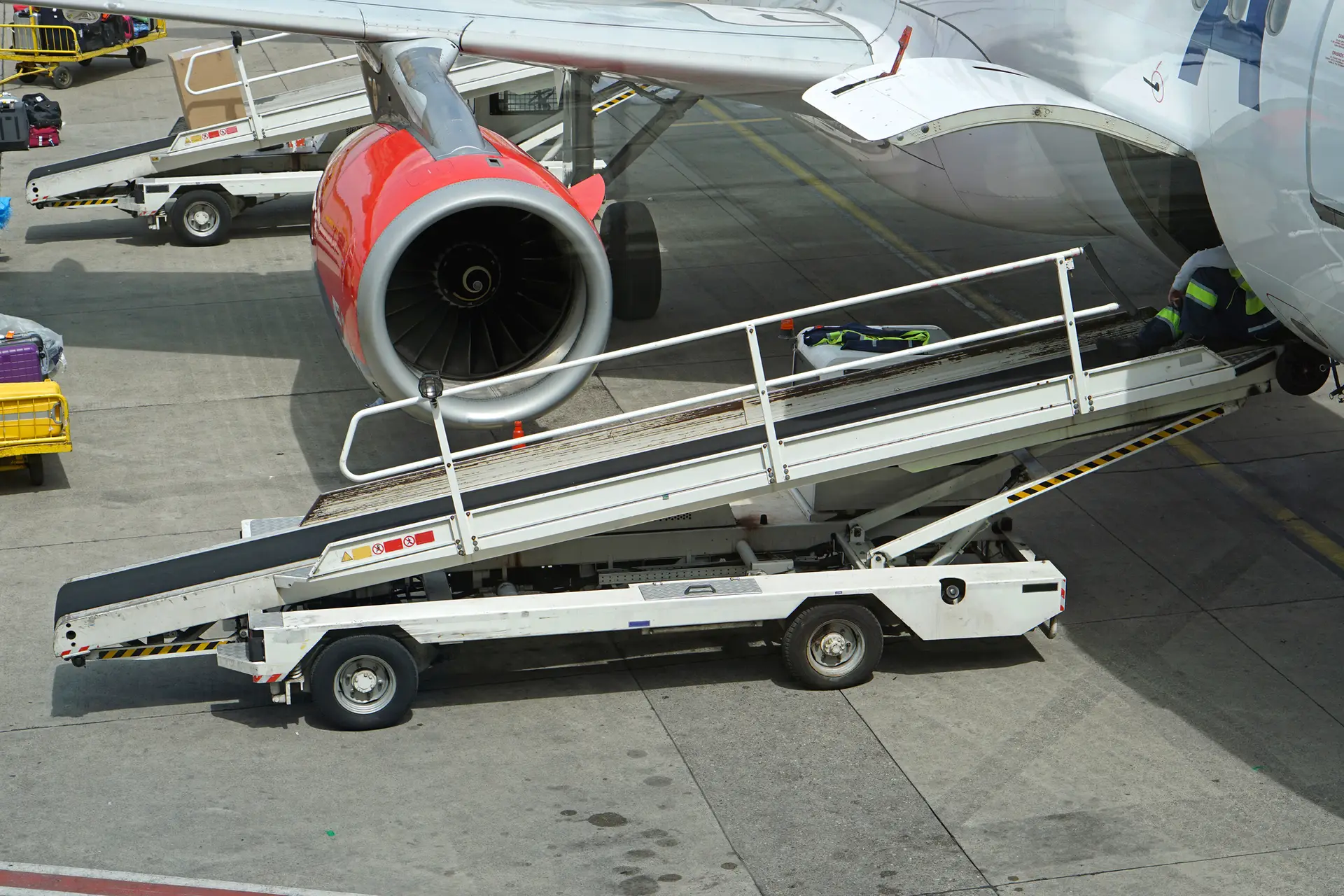Understanding the role of Weights and Balances in Aviation

- aviatorpro_6714
In the world of aviation, the importance of weights and balances cannot be overstated. They are fundamental to ensuring the safety and performance of an aircraft. But what exactly do weights and balances mean in this context, and why are they so crucial? This article delves into the role of weight distribution in aviation, explores the principles of weight and balance, and highlights their importance in ensuring safe and efficient flight operations.
What Are Weights and Balances?
Weights and balances refer to the distribution of weight within an aircraft and the calculation of its center of gravity (CG). The center of gravity is the point where the aircraft would balance if it were possible to suspend it at that point. Proper weight distribution ensures that the aircraft remains stable during flight and that it performs as expected under various conditions.
The Concept of Center of Gravity
The center of gravity is a pivotal point that determines how an aircraft behaves during flight. Its location affects the aircraft’s stability and maneuverability. A well-calibrated CG allows for smooth takeoffs, stable cruising, and safe landings. Pilots and engineers must understand the significance of CG to manage an aircraft’s balance effectively.
Impact on Aircraft Design
Aircraft designers meticulously calculate weight and balance to optimize performance. The design phase involves creating a layout that allows for flexibility in weight distribution. This includes strategically placing fuel tanks, cargo compartments, and seating arrangements. The goal is to enhance the aircraft’s operational capabilities while maintaining safety standards.
Understanding Balance Limits
Each aircraft has specific balance limits that must be adhered to. These limits define the acceptable range within which the CG can move without compromising safety. Exceeding these limits can lead to dangerous flight conditions, such as difficulty in controlling the aircraft or even structural failure. Aviation professionals must constantly monitor weight and balance to ensure they remain within these critical boundaries.
The Science Behind Weights and Balances
The principles of weights and balances are rooted in basic physics. Understanding these principles is essential for pilots, engineers, and anyone involved in aircraft operations.
Newton’s Laws and Aviation
Newton’s laws of motion form the basis for understanding weights and balances in aviation. The first law, inertia, explains why an aircraft resists changes in motion unless acted upon by an external force. The second law, relating force, mass, and acceleration, helps in comprehending how weight distribution affects flight dynamics. Lastly, the third law, action and reaction, is evident in the way aircraft engines provide thrust.
Forces Acting on an Aircraft
Several forces act on an aircraft during flight, including lift, weight, thrust, and drag. Balancing these forces is crucial for stable flight. The weight and balance of an aircraft influence how these forces interact. Properly managing these forces ensures that the aircraft can maintain equilibrium and respond predictably to pilot inputs.
The Role of Aerodynamics
Aerodynamics plays a significant role in weights and balances. The shape and design of an aircraft affect how air flows around it, impacting lift and drag. A well-balanced aircraft experiences less aerodynamic drag, making it more fuel-efficient and easier to control. Understanding aerodynamics helps pilots and engineers optimize an aircraft’s performance by adjusting weight and balance accordingly.
Why Are Weights and Balances Critical in Aviation?
The significance of weights and balances extends beyond basic flight mechanics. Proper weight and balance management is vital for several reasons.
Ensuring Safety
Safety is the foremost concern in aviation. Incorrect weight distribution or a miscalculated CG can lead to dangerous flight conditions. For example, an aircraft that is nose-heavy may struggle to take off, while one that is tail-heavy might become uncontrollable during flight. Adhering to weight and balance guidelines helps prevent accidents and ensures a safe journey.
Preventing Accidents
The aviation industry has learned from past incidents that improper weight and balance can lead to catastrophic accidents. By analyzing these events, the industry has developed stringent guidelines to mitigate risks. Continuous training and awareness programs for pilots and crew ensure that safety remains a top priority.
Emergency Scenarios
In emergency situations, understanding weights and balances becomes even more critical. For instance, during an engine failure, pilots must quickly assess the aircraft’s balance to execute safe emergency landings. Proper weight management can make the difference between a controlled landing and a disastrous outcome.
Safety Equipment and Procedures
Modern aircraft are equipped with safety equipment designed to assist in weight and balance management. Automated systems provide real-time data, alerting pilots to potential imbalances. Additionally, standardized procedures ensure that all personnel involved in flight operations prioritize weight and balance considerations.
Optimizing Performance
Proper weight and balance also contribute to the aircraft’s performance. An optimally balanced aircraft is more fuel-efficient, as it experiences less aerodynamic drag. This efficiency not only reduces fuel costs but also extends the range and endurance of the aircraft.
Enhancing Fuel Efficiency
Fuel efficiency is a significant concern for airlines seeking to reduce operational costs. An aircraft with a well-maintained weight and balance profile consumes less fuel, as it requires less thrust to maintain speed and altitude. This translates into substantial savings over time, benefiting both the environment and the airline’s bottom line.
Improving Aircraft Range
The range of an aircraft, or how far it can fly without refueling, is directly influenced by its weight and balance. By optimizing these factors, airlines can extend the range of their flights, opening up new routes and markets. This flexibility is particularly valuable for long-haul flights, where fuel efficiency is paramount.
Enhancing Pilot Control
A well-balanced aircraft is easier for pilots to control, especially in challenging weather conditions. Proper weight distribution allows for smoother handling and more precise control inputs. This enhances the overall flying experience and reduces pilot workload, contributing to safer and more enjoyable flights.
Compliance with Regulations
Aviation authorities, such as the Federal Aviation Administration (FAA) in the United States, have established strict regulations regarding weights and balances. These regulations require operators to maintain accurate weight and balance records and to adhere to specific limits for safe operation. Compliance with these regulations is mandatory for all aircraft operators.
Regulatory Frameworks
The regulatory frameworks governing weights and balances are comprehensive and detailed. They outline the responsibilities of airlines, pilots, and maintenance crews to ensure compliance. Regular audits and inspections help enforce these regulations, maintaining high safety standards across the industry.
Record-Keeping and Documentation
Accurate record-keeping is essential for compliance with weight and balance regulations. Airlines must maintain detailed documentation of weight calculations, balance assessments, and any adjustments made. This information is critical for regulatory audits and can serve as evidence of compliance in case of incidents.
Training and Certification
Training programs are in place to ensure that aviation professionals are knowledgeable about weights and balances. Certification courses for pilots, engineers, and ground crew emphasize the importance of proper weight management. Ongoing education and recertification help maintain a culture of safety and compliance within the industry.
Practical Applications of Weights and Balances
In practice, managing weights and balances involves a combination of planning, calculation, and adjustment.
Pre-flight Planning
Before each flight, pilots and ground crew conduct a thorough weight and balance assessment. This includes checking the weight of passengers, luggage, cargo, and fuel. Adjustments are made as necessary to ensure the aircraft remains within the acceptable CG range.
Passenger and Cargo Management
Managing passengers and cargo is a critical aspect of pre-flight planning. Airlines utilize seating charts and cargo placement strategies to achieve optimal weight distribution. This careful planning ensures that the aircraft remains balanced throughout the flight, enhancing safety and performance.
Fuel Calculation and Distribution
Fuel is a significant factor in weight and balance calculations. Pilots must determine the appropriate amount of fuel needed for the journey while considering the aircraft’s weight limits. Fuel distribution is also managed to maintain balance, with tanks sometimes filled in a specific sequence.
Communication and Coordination
Effective communication and coordination among crew members are essential during pre-flight planning. Pilots, ground staff, and cabin crew work together to ensure all weight and balance considerations are addressed. This collaborative approach minimizes the risk of errors and enhances overall safety.
In-flight Adjustments
During flight, pilots may need to make adjustments to maintain proper balance, especially if passengers move around or if fuel consumption changes the aircraft’s weight distribution. Pilots are trained to monitor and adjust the aircraft’s balance to ensure stability throughout the flight.
Monitoring Systems and Alerts
Modern aircraft are equipped with sophisticated monitoring systems that provide real-time data on weight and balance. These systems alert pilots to any deviations, allowing them to make timely adjustments. This continuous monitoring is crucial for maintaining stability and safety during flight.
Passenger Movement and Impact
Passenger movement within the cabin can affect the aircraft’s balance. Pilots and cabin crew must be vigilant in managing passenger behavior, especially on smaller aircraft. Guidelines for passenger movement help mitigate the impact on weight distribution.
Fuel Burn Management
As fuel is consumed during flight, the aircraft’s weight and balance change. Pilots must continuously monitor fuel levels and adjust controls accordingly. Understanding fuel burn patterns and their impact on balance is essential for maintaining optimal flight performance.
Technology and Tools
Modern aircraft are equipped with advanced technology to assist with weight and balance calculations. Onboard systems provide real-time data, allowing pilots to make informed decisions. Additionally, software tools and apps are available to simplify the process, making it more accessible to pilots and crew.
Onboard Calculation Systems
Onboard calculation systems automate weight and balance assessments, reducing the potential for human error. These systems integrate with other flight management tools to provide pilots with comprehensive data. The seamless integration enhances decision-making and flight safety.
Software Solutions and Apps
Software solutions and mobile apps have revolutionized weight and balance management. These tools offer user-friendly interfaces and comprehensive databases, allowing pilots to quickly input data and receive accurate calculations. The convenience of these solutions has made them indispensable in modern aviation.
Advancements in Technology
Technological advancements continue to improve weight and balance management. Innovations such as automated load sensors and AI-driven analytics provide even greater precision and efficiency. As technology evolves, the industry benefits from enhanced safety and performance capabilities.
Conclusion
Weights and balances are a cornerstone of aviation safety and efficiency. By understanding the principles of weight distribution and center of gravity, aviation professionals can ensure that aircraft operate safely and effectively. Whether you’re a pilot, engineer, or aviation enthusiast, appreciating the role of weights and balances will deepen your understanding of how aircraft achieve the remarkable feat of flight.
The Importance of Continuous Learning
Continuous learning and adaptation are essential in the ever-evolving field of aviation. Staying informed about the latest developments in weight and balance management ensures that aviation professionals remain at the forefront of safety and efficiency.
Encouraging Best Practices
Promoting best practices in weight and balance management is crucial for maintaining high safety standards. Sharing knowledge and experiences within the industry fosters a culture of safety and innovation, benefiting everyone involved in aviation.
Future Directions
The future of weight and balance management holds exciting possibilities. Advances in technology, materials, and design will continue to shape the industry. Embracing these changes and remaining committed to safety will ensure that aviation remains a safe and reliable mode of transportation for years to come.



